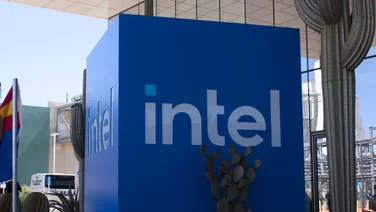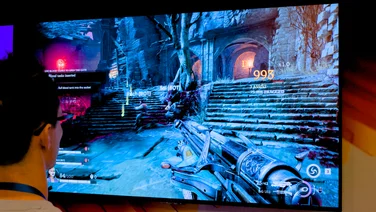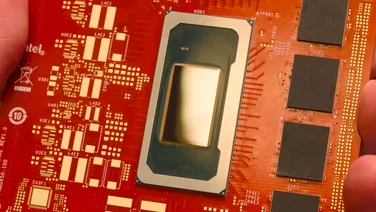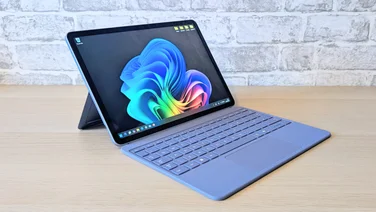To help us provide you with free impartial advice, we may earn a commission if you buy through links on our site. Learn more






- Incredibly versatile and powerful
- Good battery life considering the power
- Compact and portable
- Pricey
- Base model isn't worth considering
Microsoft’s hardware arm took years to produce its first proper laptop, but when it did it struck mobile gold. The only problematic thing about the Surface Laptop is the fact that it runs Windows 10 S. That’s a restriction the Surface Book 2 doesn’t suffer from; in fact, there isn’t much about the second generation of Microsoft’s 2-in-1 laptop that is restricted.
This is Microsoft’s halo product: a do-it-all a laptop you can use for office work and on the road, as a graphics, video or photo editing workstation, a sketch or notepad and even a games console.
READ NEXT: Best laptops – our favourite notebooks
Microsoft Surface Book 2 review: What you need to know
That’s the Microsoft Surface Book 2 in a nutshell, really. It’s a powerful laptop that can turn its hand to pretty much anything you care to think of. Most of the time you’ll be using it as a regular notebook, but you can also detach the screen and use it as a large tablet, you can reverse-dock the screen into the keyboard so you can use it as a clipboard and it’s compatible with the (optional) Surface Pen so you can jot down notes and sketch out ideas, too.
The big difference with this new generation is that Microsoft now has a 15in version to go with the 13.5in version we have on test here, although before you get too excited, the larger Surface Book 2 won’t be available in the UK until early 2018.
Otherwise, it’s largely the same as the Surface Book that came before it, but with (of course) improved Coffee Lake CPUs and updated 2017 prices (oh, goody).






Microsoft Surface Book 2: Price and competition
And you’ll need to brace yourself when it comes to those prices because the new Surface Book is painfully expensive. In fact, the cheapest 13.5in model is £1,499, which nets you a Kaby Lake Core i5, 8GB of RAM and 256GB of SSD storage.
The most expensive model – the one I’m reviewing here – costs £2,999. That includes a quad-core Coffee Lake 1.9GHz Core i7-8650U, 16GB of RAM, a 1TB SSD and a discrete graphics chip: an Nvidia GeForce GTX 1050.
In between those two extremes is the Core i7, which comes with 8GB RAM, 256GB of storage and a GTX 1050 for £1,999; and the Core i7 with 16GB RAM, 512GB of storage and the GTX 1050 for £2,499.
If you discount the base model, and you should because there are much better options at £1,500, there’s no other 2-in-1 convertible detachable laptop as powerful or as expensive as the Surface Book 2. So if you need all the things it can do you’ll just have to swallow those prices.
If you can sacrifice a capability here or there, though, there are a few other machines that overlap it in some way or other. In terms of sheer performance and long battery life the obvious rival is Apple’s MacBook Pro and my choice of powerful laptop. You can buy a MacBook Pro in 13in and 15in guises and prices start at £1,249 for a dual-core Kaby Lake 2.3GHz Core i5 with 8GB of RAM and a 128GB. Obviously, you’re missing out on the touchscreen, tablet and stylus support but at that price, it’s a great choice.
Windows 10 alternatives run the full gamut of laptop styles and prices. For sheer power and gaming capabilities, nothing beats the Asus ROG Zephyrus at £2,699, though it’s a bigger, bulkier machine, while the Dell XPS 13 offers power and superior portability, a greater range of configurations and cheaper prices. If it’s a 2-in-1 you desperately want, the HP Spectre x360 is a good shout, too, starting at £1,149 inc VAT and that includes stylus support as well, though no option to specify a discrete GPU.






Microsoft Surface Book 2: Design, ergonomics and key specifications
As I’ve already highlighted, there really isn’t anything like the Surface Book 2 on the market today, which must be why Microsoft didn’t feel the need to change anything about the design.
So we still have the chunky, matte silver chassis and that unique, accordion-style hinge, which lets you use the Surface Book in multiple configurations. This looks a touch odd but it feels robust and the clever, electronic latching mechanism ensures that docking and undocking the tablet into the keyboard is always a reliable process, although a little slow.
As before, there are two batteries – one in the tablet and one in the keyboard base – and the Core i7 models also house an extra discrete Nvidia GTX 1050 graphics chip in the base, which the laptop defaults to whenever the tablet is docked. It’s still pretty hefty for a 13.5in laptop with the Core i7 tipping the scales at 1.64kg, but with this much power on tap, I’d say that’s a reasonable compromise.
And there’s plenty to like about the rest of design, as there was with the first Surface Book. The keyboard has plenty of feedback and travel and is backlit so you can happily tap away in darkened meeting rooms and the touchpad hits all the right notes, too. It’s hinged at the top, so clicks only register at or below the mid-point, but it’s smooth under the finger and Windows 10’s gestures work perfectly on it.






In fact, the only new thing from a physical perspective is the Type-C USB 3.1 port on the keyboard base’s right-hand edge, which can be used to output video, transfer data and charge the laptop. It doesn’t support Thunderbolt 3, which means you won’t be able to do cool stuff like connect external graphics cards, though, and some may also bemoan the fact that Microsoft has removed the DisplayPort connector.
It’s pretty well appointed for other ports, though, with a pair of Type-A USB 3.1 sockets on the left edge of the keyboard base and a full-size SD card slot next to them, plus a 3.5mm headphone jack in the top right corner of the tablet. Wireless connectivity stretches to 802.11ac and Bluetooth 5, and the tablet has a pair of cameras built in, one Windows Hello compatible 5-megapixel unit at the front and one 8-megapixel snapper at the rear, both capable of capturing 1080p video.
Microsoft Surface Book 2 review: Display and performance
The Surface Book 2’s 3,000 x 2,000 resolution, 3:2 aspect ratio screen is (as has been the case for some time now on Microsoft’s devices) beyond reproach. Tested with our in-house colorimeter it returned nigh-on perfect scores across the board, hitting a peak brightness of 462cd/m2 – very bright for a laptop – covering 96.6% of the sRGB colour gamut and achieving colour accuracy scores a professional monitor would be envious of.
It’s very, very good. And while not 120Hz good like the display on the Asus ROG Zephyrus, it’s good enough that your Photoshop and video-editing efforts won’t go to waste.
It also responds well to stylus and touch input, with support for tilt and 4,096 levels of pressure sensitivity via the new Surface Pen, plus there’s support for the Surface Dial, although with the 13.5in model this covers too much of the screen to be useful.
Performance is fantastic, with the one caveat that leaving the laptop to auto-detect when to use the Intel HD Graphics 620 and when to switch to the discrete GPU isn’t always successful. It’s a bit of a pain having to switch between them manually.






However, if you’re not bothered by that, you’ll be rewarded with bucketloads of power. The Surface Book 2’s Nvidia GTX 1050 GPU allows you play demanding games without having to dumb down the resolution or the quality much at all. I ran our usual Metro Last Light benchmark at the Book 2’s native resolution of 3,000 x 2,000 with the settings on High and it returned an average frame rate of 26.5fps; drop the resolution to 1080p and that climbs to 71fps. In Dirt Showdown it hit 68.3fps in native resolution with 4x antialiasing enabled.
These are seriously impressive numbers and not far off the performance of the Asus ROG Zephyrus with its more powerful GTX 1070 GPU. It’s also worth noting that the PCIe SSD is lightning quick as well, achieving sequential data transfer rates of 2,162MB/sec for reads and 927MB/sec for writes.
The Surface Book’s low-power CPU means it can’t match the raw speed of the Asus with its Core i7-7700HQ, returning a score of 75 to that laptop’s 130 in our in-house application benchmarks, but where the Surface Book 2 wins is battery life. While you’ll struggle to get a full day’s use out of the ROG, the Surface Book 2 will go for hours longer than that laptop without having to top up from the mains … as long as you resist the temptation to play Forza Motorsport 7, that is. The battery will deplete rapidly if you start employing the full talents of the GTX 1050.
Having said that, the Surface Book 2 didn’t exactly trouble the record book in our video rundown test. With the integrated graphics chip enabled and battery settings set to the recommended level, the Book 2 lasted 5hrs 36mins. That’s a long way short of the much more impressive Surface Pro (2017, Core i7-7660U edition), which lasted a rather more impressive 11hrs 33mins.
Microsoft Surface Book 2 review: Verdict
The Microsoft Surface Book 2, just like the generation, is a laptop possessed of a unique set of capabilities. It’s fast and powerful enough to game on, you can comfortably run any application you care to think of on it and the display is good enough for professional-level photo editing, illustration and video editing. You can even sketch and take notes on the screen if you really want to.
If you need all these things, the 13.5in Surface Book 2 is currently unmatched. It’s essentially all the power of a desktop PC squeezed into a package you can comfortably carry around with you and even the £1,999 model gives you more for your money than the equivalent MacBook Pro 13.
That’s not to say it’s a laptop that will suit everyone, though. Not a bit of it. The £2,000 price for the Nvidia-equipped base model is still an awful lot of cash to pay for any laptop and if you don’t want to game, there are better options than the £1,499 Core i5 Surface Book, notably the HP Spectre X360 or the aforementioned MacBook Pro 13. For all-out power and sheer do-it-all might, however, there isn’t anything to touch the Core i7 Microsoft Surface Book 2.









